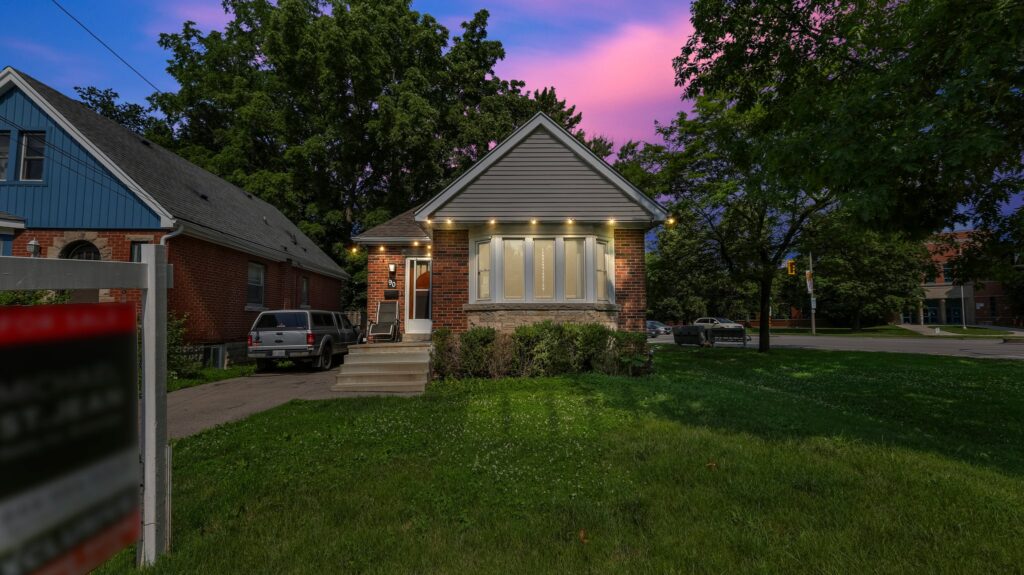
The highly anticipated numbers for the real estate market in the Hamilton-Burlington area for May 2017 have been released. Many have been waiting to see what the results of the May market would look like after the Fair Housing Plan was unveiled in April, and it is mostly as we predicted. Though we were already aware that these measures had no impact on the true value of homes — and, at most, these measures were primarily psychological — it’s still had an effect on the market.
3,013 new listings hit the market in May — a 44.2 percent year-over-year increase. It’s clear that last month’s announcement scared sellers that had been sitting on the fence into putting their homes on the market. These are people thinking of retiring, sizing down, or otherwise cashing out of their existing homes or investment properties. These people would have sold their homes, regardless, within the next couple of years, but the psychological impact of the government’s annoucement has led them to put their homes on the market now.
We’ve been in a persistent seller’s market for the last five years. This sudden rush of new listings still doesn’t tip the balance into buyers market territory. It’s still a seller’s market. Inventory is still very tight; it would take months of increased inventory to tip the balance towards a buyers market. There’s nothing wrong with cashing out right now and taking some profit. But we don’t see this as a turning point in the market and do not recommend making any quick decisions because of fear.
Sales decreased 1.4% to 1,745 year-over-year, from 1,770 last May. This is barely statistically relevant, regardless of the government’s theoretical “cooling measures.” Nevertheless, it is an interesting statistic, as it shows that the Hamilton market fared much better in comparison to Toronto. In Toronto, sales are down 20 percent in May.
Meanwhile, prices are up almost 25 percent year-over-year, with the average price now at $618,668. Comparatively, Toronto’s prices are only up 15 percent over May of last year. The average days on the market was 16, down year-over-year from 23 in May 2016. Homes sold faster than a year ago and at much higher rates.
Though there has been some initial disruption, historically markets bounce back fairly quick when similar measures have been released. In the Hamilton market, very little was impacted except for the volume of listings coming to market. Ontario’s Fair Housing Plan was essentially used to scare buyers and sellers out of the market, with the intent of cooling it off.
The Canadian economy is growing faster than we have seen in many years and is currently leading the pack among the G7 nations. Our local economy is also growing, businesses are being established, unemployment is falling, wages are growing. interest rates are low and we still have a major supply and demand problem. Hamilton is situated right in the middle of the most prosperous region of our country. Our average home values sit roughly 50% lower than similar housing stock in Toronto proper. The foundations of the market are strong — these are the factors that truly dictate what direction the real estate market goes. Hamilton has many years of significant growth ahead of itself. It is only now coming out of a 20-year slump. Hamilton is not an over-valued market.
There have been some impacts because of April’s housing announcement. The fear driven rush of new listings has given buyers a ton of new product to consider. As a result activity on active listings has slowed. To be clear, multiple offers are still ocurring but not as commonly as they were 30 days ago. Sales are at nearly a break-even point, prices are up almost 25 percent, and houses are selling 30 percent quicker than a year ago. Even in the face of government intervention and attempts to impact the mindsets of buyers and sellers, Hamilton has proven thus far to be very resiliant in a time when people have been a little uncertain and afraid. Though there may be short-term impacts on the market, buyers and sellers can both rest assured that Hamilton is going to both retain and build upon its current value.


